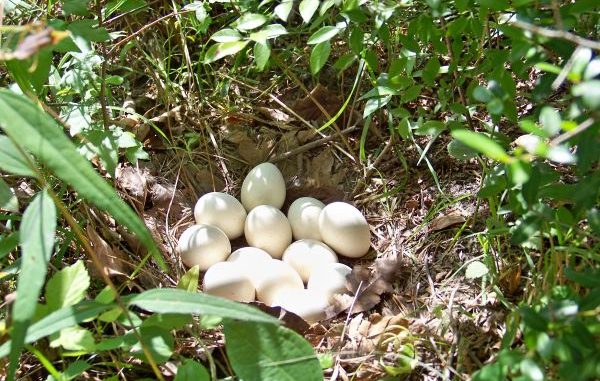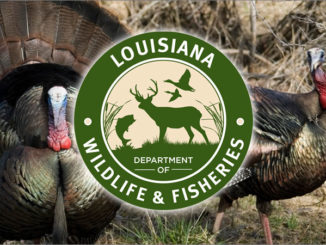
During his years of turkey watching, LDWF biologist Jimmy Stafford has seen a few memorable moments.
For example, albinos rarely reach adulthood because their lack of camouflage makes them easy targets for predators. Nevertheless, Stafford has seen full and partial albino adults walking the Louisiana woods.
And, even though, a clutch of 11 to 12 eggs is about average, he’s seen hens lay up to 22 in a single nest. Typically, hens cannot successfully incubate so many, but that doesn’t prevent sightings of massive poult gatherings.
He’s spotted multiple hens feeding in a common area, with their mingling broods bringing up to 30 poults together in one feathered mass.
And if you think turkeys are strictly terrestrial, think again.
“On rare occasions, our turkeys will actually swim,” Stafford said. “A guy sent me a picture once of three jakes swimming in the Mississippi River.
“I’ve personally witnessed turkeys wading in water halfway up their body. So Louisiana birds do not have an aversion to water. Obviously, if their feathers get completely saturated, they have difficulty flying. It’s unusual, but it does occur that you’ll see them wading around.”
Notwithstanding cases of turkeys being flushed into unplanned swimming missions by predators, Stafford said the likely explanation for wading activity is simply a feeding expedition: Turkeys are known to pick up crawfish, small snakes, floating berries and any other edible item that catches their keen eye.


